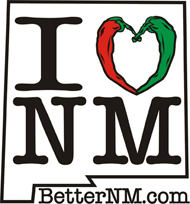Mikaela says:
Great article in today's Washington Post about the new trend of colleges in urban areas taking an interest in community development -- for their own benefit, of course -- that should be a model for corporations and others.
Ten years ago, the University of Pennsylvania was under siege, its ivy towers wreathed by an abandoned industrial wasteland, filth and soaring crime. Parents feared for their children after two student homicides.
...
"They had one of two choices after the murders. They could build up more barricades, surround them with a moat and fill the moat with dragons," said Barry Grossbach, a community activist in the West Philadelphia neighborhood. "Or they could reach out and save the community. . . . It was self-preservation."
...
The university and private developers have invested about a billion dollars over the past decade in security, retail, schools, the local housing market and what Penn refers to as "economic inclusion" -- making sure the community and minority companies get a piece of the success.
...
Penn is at the forefront of a national trend of urban colleges that are aggressively trying to bridge "town-gown" tensions by investing heavily in adjacent troubled neighborhoods -- and by making a connection with local civic life. Since Penn launched its efforts in 1996, officials from more than 100 schools have made pilgrimages to study how it transformed a decaying neighborhood with a thriving drug traffic into a vibrant college community.
...
"We sees ourselves as an extension of the community," said Maybelle Taylor Bennett, director of the Howard University Community Association. "It's enlightened self-interest."
...
As a case study, Penn's urban renewal effort is probably the most comprehensive -- targeting every service and institution that makes a community vibrant. The university restored shuttered houses and offered faculty incentives to move into the neighborhood; invested $7 million to build a public school; brought in a much-needed 35,000-square-foot grocery store and movie theater; and offered the community resources such as hundreds of used Penn computers.
...
"We said we teach our students about civic engagement. You can't do that and not be role models for civic engagement," said former Penn president Judith Rodin, who was a catalyst in the renewal efforts.
...
In the 1950s and '60s, the university -- with the help of federal and local officials -- displaced residents to expand. Homes were abandoned, businesses fled, crime took over -- and Penn simply fortified its walls.
...
"We destroyed a neighborhood that had existed for 50 years. And we replaced it with a neighborhood that had no life, no vibrancy on the streets," said Omar Blaik, Penn's senior vice president for facilities and real estate services.
...
The first steps were to form a partnership with community leaders and neighborhood associations and to light the neighborhood, clean it and make it green. Lights were enhanced at 1,200 properties, and 400 trees were planted as well as 10,000 flower bulbs.
Gradually, university buildings were refaced to open out toward the streets, and all new buildings had ample windows facing the street, making the school appear welcoming and providing additional lighting on the streets for safety.
...
To bring back residents, Penn spent several million dollars renovating 20 dilapidated houses and priced them so middle-class residents could afford them. Nearly 1,000 employees have accepted the incentives to buy homes in the community.
...
But most people agree that the most important thing the university did was commit to build a public school. "That changed everything," said Tony Sorrentino, director of external affairs for the facilities office. "It brought families back."





|